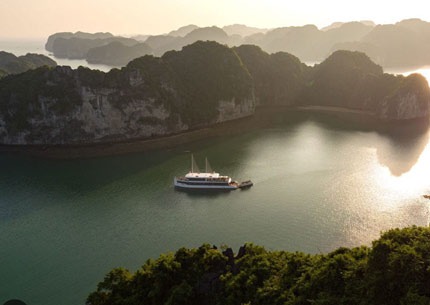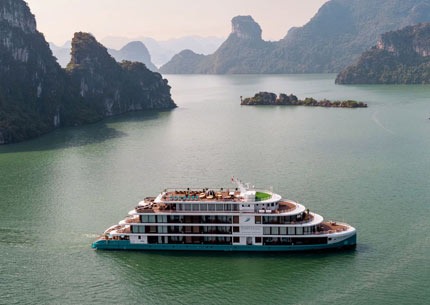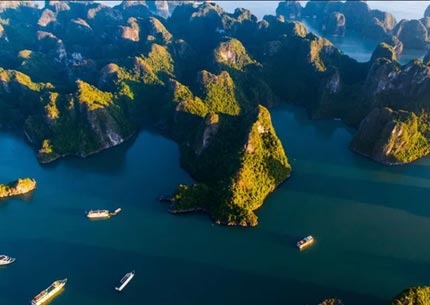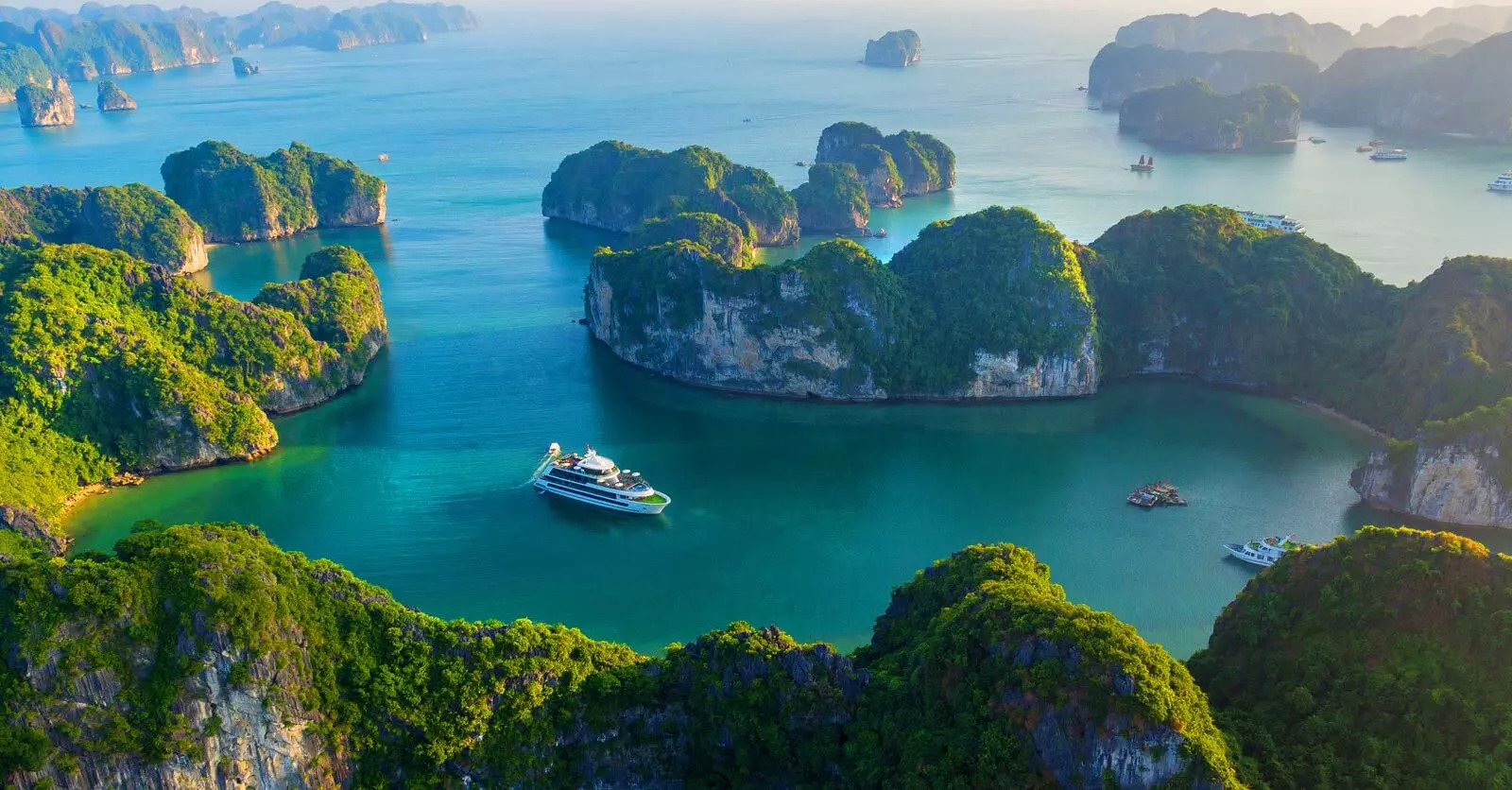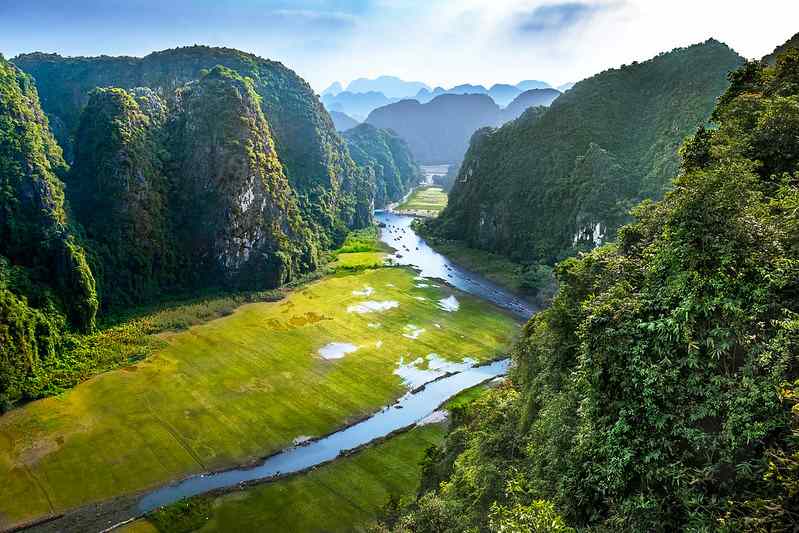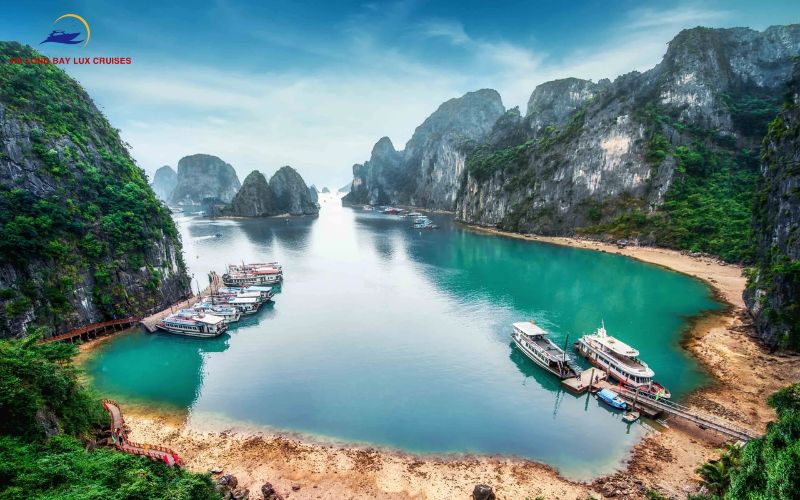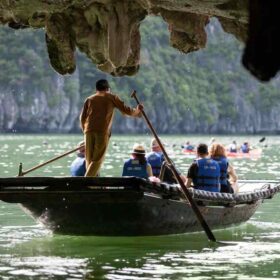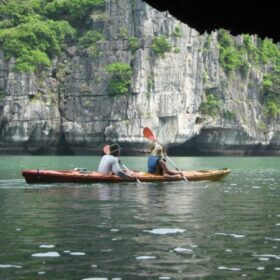Geological Overview of Ha Long Bay
Ha Long Bay is not only a UNESCO World Heritage Site but also a geological treasure shaped over hundreds of millions of years. Located in northern Vietnam, the bay spans more than 1,500 square kilometers and features nearly 2,000 limestone islands and islets rising from the sea.
The foundation of Ha Long Bay’s geology is limestone—formed over 340 to 250 million years ago, during the Paleozoic Era. Back then, the area was covered by a warm, shallow sea where marine organisms settled and formed thick layers of sediment. Over time, tectonic movements lifted these layers, creating a massive limestone platform.
This ancient bedrock later underwent intense karst processes—a combination of chemical weathering, erosion, and the effects of changing sea levels. These natural forces sculpted the bay’s signature landscape: steep cliffs, stone towers, caves, and enclosed valleys.
Today, Ha Long Bay serves as a textbook example of tropical karst terrain and a living archive of Earth’s long and dynamic geological history.
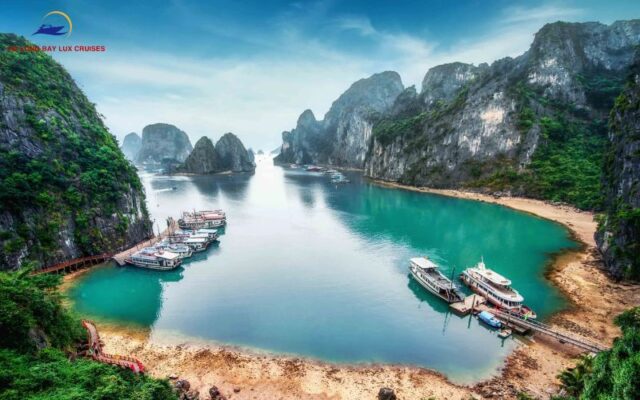
Formation of Limestone Karsts
The dramatic limestone karsts that define Ha Long Bay are the result of a complex geological process spanning millions of years. These towering formations didn’t appear overnight—they were sculpted by a combination of time, tectonics, and weather.
The story of Ha Long Bay geology begins with the formation of thick limestone layers on an ancient seabed, around 340 to 250 million years ago. Over time, the region was uplifted by tectonic forces, exposing the limestone to the surface.
Once exposed, the limestone was gradually shaped by karstification—a process where slightly acidic rainwater and groundwater dissolve the calcium carbonate in the rock. This leads to the creation of caves, sinkholes, and the separation of limestone blocks into distinct towers and ridges.
Ha Long Bay’s climate, with heavy rainfall and warm temperatures, accelerated this process, allowing nature to carve out its famous landscape. The result is a spectacular system of cone-shaped hills, stone towers, and enclosed valleys, many of which rise vertically from the sea.
This type of karst formation is rare in tropical coastal settings, making Ha Long Bay’s limestone landscape not only beautiful but also scientifically significant.
Caves and Underground Features
A key highlight of Ha Long Bay geology is its extensive network of caves and underground formations, many of which are hidden within the limestone karsts. These caves were formed over thousands of years through the slow dissolution of limestone by acidic water, a process known as chemical weathering.
As rainwater seeps into cracks and crevices in the rock, it gradually enlarges them, creating underground passages, chambers, and intricate cave systems. Over time, some of these passages collapse, leaving behind dramatic openings and grottoes that are now accessible to visitors.
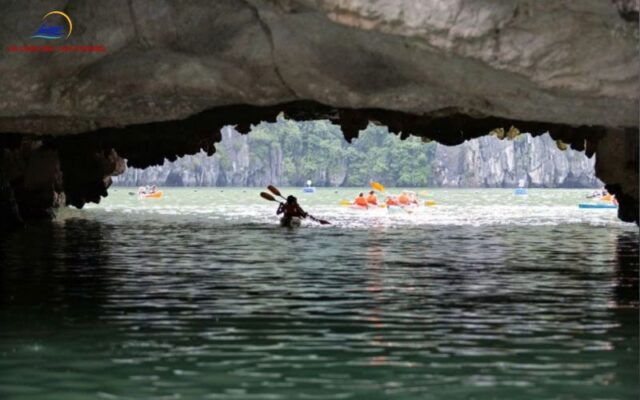
Famous Caves in Ha Long Bay Include:
- Sung Sot Cave (Surprise Cave): One of the largest and most visited caves in the bay, known for its massive chambers and impressive stalactites and stalagmites.
- Thien Cung Cave (Heavenly Palace Cave): Features complex rock formations, colored lights, and myths tied to Vietnamese legends.
- Dau Go Cave (Wooden Stakes Cave): A historically significant site believed to be connected to Vietnam’s 13th-century naval battles.
These caves not only offer natural beauty but also serve as windows into the region’s geological evolution, with layers of rock and mineral deposits telling stories of ancient climates, tectonic shifts, and the power of water over stone.
Exploring these underground features provides a deeper appreciation for the hidden complexity of Ha Long Bay’s geology—a fascinating world beneath the iconic cliffs.
Tectonic Activity and Sea Level Changes
The striking landscape of Ha Long Bay is not only shaped by karst processes but also deeply influenced by tectonic activity and shifts in sea level over millions of years. These natural forces played a vital role in forming the bay as we see it today.
During the Paleozoic and Mesozoic eras, the region experienced multiple episodes of tectonic uplift and subsidence. As tectonic plates moved, they caused the limestone bedrock to rise above sea level, exposing it to erosion and weathering. Faulting and folding during these movements helped create the fractures and vertical cliffs that define many of the bay’s islands.
Alongside tectonic forces, fluctuating sea levels further shaped the landscape. During the Ice Ages, sea levels dropped significantly, exposing more of the limestone terrain to erosion. Later, as the climate warmed and glaciers melted, rising sea levels submerged the lower parts of the karst landscape, transforming valleys into channels and isolating limestone towers into the iconic islands we see today.
This combination of tectonic uplift and marine transgression is what makes Ha Long Bay geology so unique. The bay is not only a product of tropical karst weathering but also a dynamic record of Earth’s geological history—where rock, water, and time have worked together to create one of the world’s most extraordinary natural wonders.
Geological Value and UNESCO Recognition
The exceptional beauty of Ha Long Bay is matched by its scientific importance. Recognized as a living laboratory of Earth’s geological processes, Ha Long Bay geology holds immense value for researchers and nature lovers alike.
The bay is a rare example of tropical karst landscape developed in a coastal setting. Its limestone towers, sinkholes, caves, and submerged valleys reveal the results of over 500 million years of geological evolution, from ancient sea sedimentation to tectonic uplift and karst weathering.
Because of its unique geological features and outstanding natural beauty, Ha Long Bay was designated a UNESCO World Heritage Site in 1994, specifically for its geomorphological and geological significance. In 2000, UNESCO further recognized the bay for its scenic and aesthetic value.
Ha Long Bay continues to attract scientists, geologists, and conservationists, who study its formations to better understand karst processes, sea-level changes, and biodiversity linked to limestone ecosystems.
This global recognition not only highlights the scientific value of Ha Long Bay but also helps promote responsible tourism and conservation efforts, ensuring that future generations can appreciate and learn from this remarkable geological treasure.
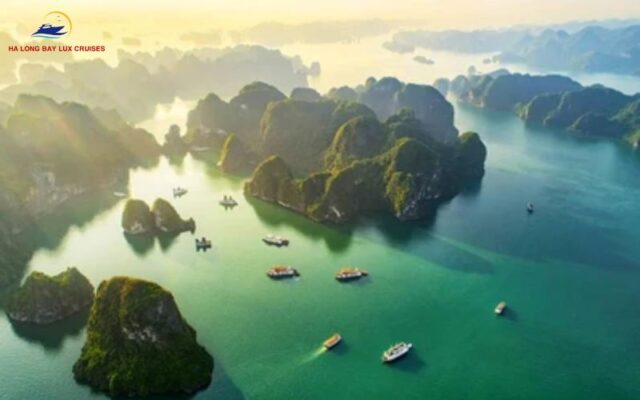
Conservation and Sustainable Tourism
As tourism in Ha Long Bay grows, so does the responsibility to protect its fragile environment and priceless geological heritage. The unique features of Ha Long Bay geology—from limestone karsts to delicate cave systems—are highly sensitive to human activity and environmental change.
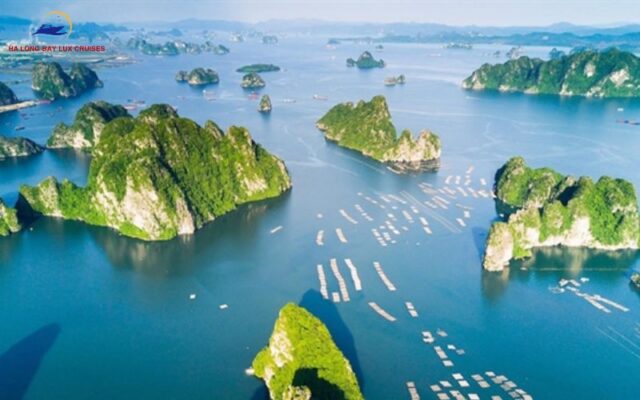
Challenges to Conservation
Mass tourism, pollution, and overdevelopment pose real threats to the bay. Wastewater from boats, littering, and excessive foot traffic can damage cave formations and erode limestone structures. Anchoring cruise ships near the islands may also disturb marine life and the seabed, further impacting the delicate balance of this natural ecosystem.
Efforts Toward Sustainable Tourism
To address these concerns, local authorities and international partners have introduced sustainability initiatives, such as:
- Limiting the number of cruise ships in the bay at any one time.
- Designating protected zones where human impact is minimized.
- Encouraging eco-friendly travel services and low-impact activities like kayaking and hiking.
Many cruise companies now offer green tours, which include environmental education, waste reduction practices, and support for conservation programs.
Your Role as a Visitor
Travelers also play a key role. Choosing responsible tour operators, avoiding single-use plastics, respecting nature, and following safety and environmental guidelines all contribute to preserving the incredible geological and ecological value of Ha Long Bay.
By supporting sustainable tourism, we help protect not only the beauty of the bay but also the millions of years of geological history carved into its stones.
Conclusion
Ha Long Bay is more than just a scenic wonder—it’s a living archive of Earth’s history. Through the lens of Ha Long Bay geology, we see how limestone, time, water, and tectonic forces combined to create one of the most unique coastal karst landscapes in the world.
From ancient seabeds to dramatic cliffs, hidden caves, and emerald waters, every feature of the bay tells a story that spans hundreds of millions of years. Its recognition as a UNESCO World Heritage Site is not only a celebration of its beauty but also a call to preserve its geological and ecological integrity.
As tourism continues to grow, so does our responsibility to explore respectfully and support sustainable efforts. By understanding the geological importance of Ha Long Bay, travelers can better appreciate the deep natural processes that shaped this remarkable destination—and help ensure it remains protected for future generations.





